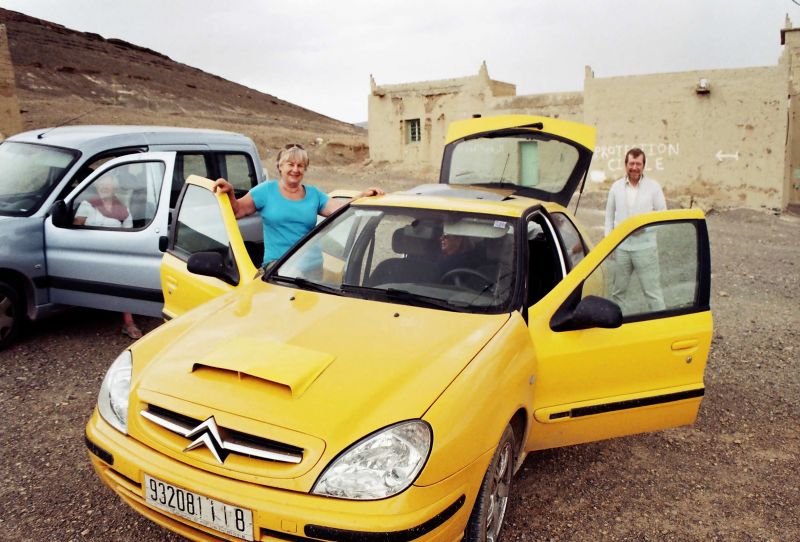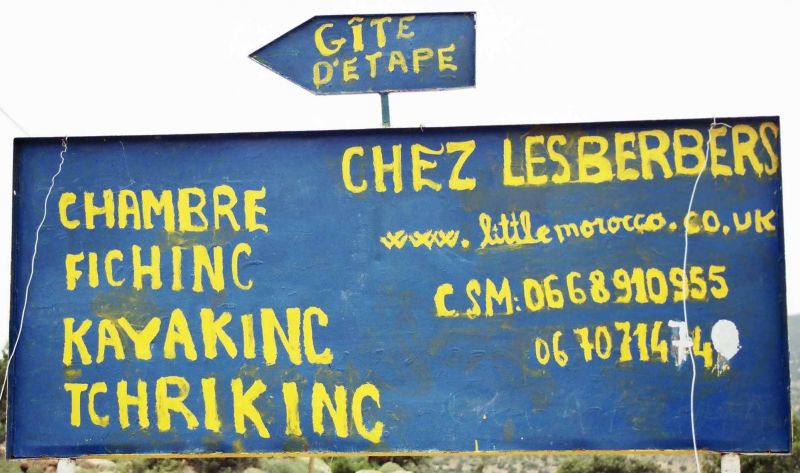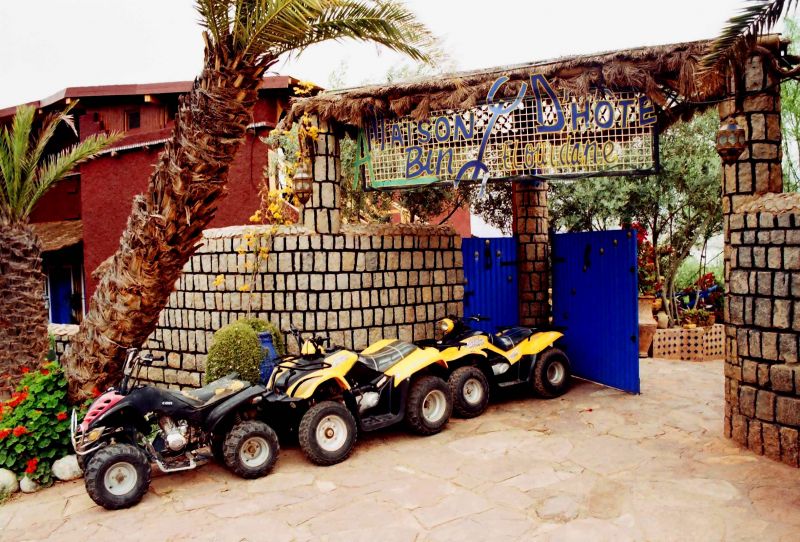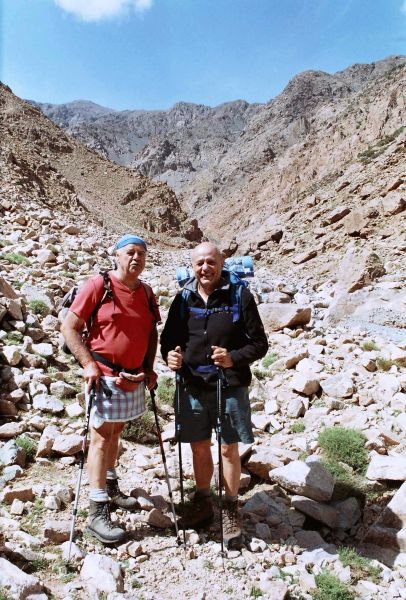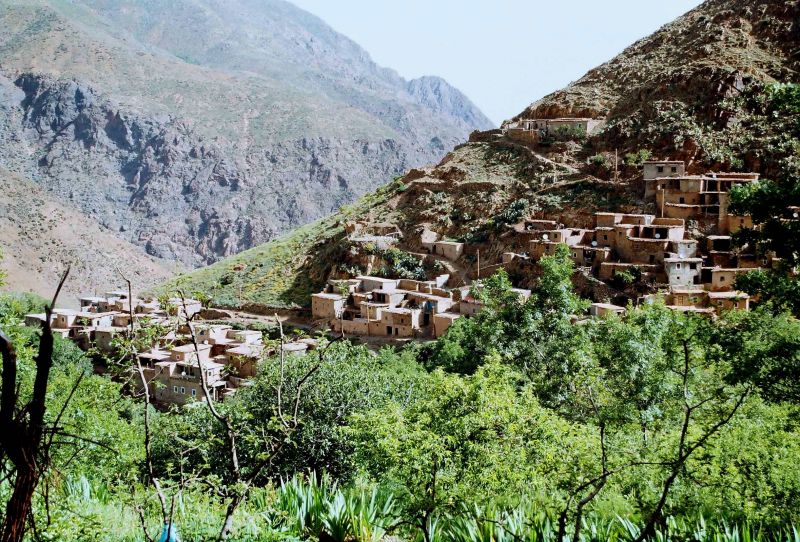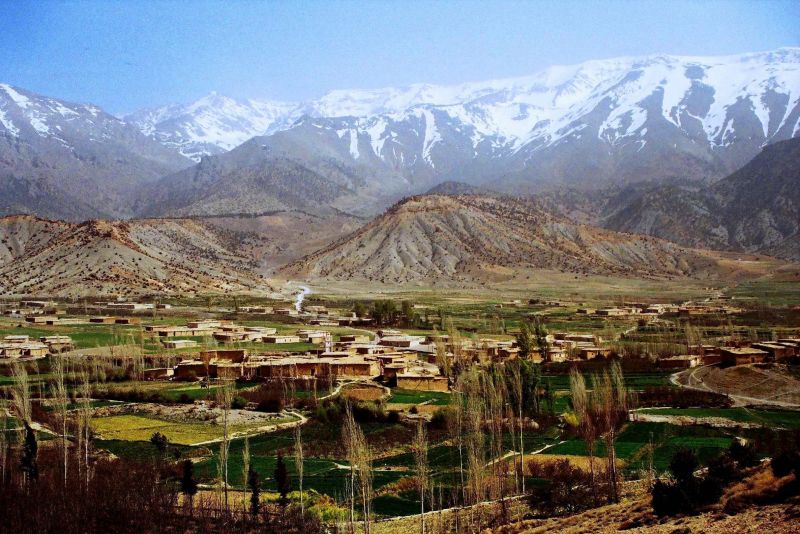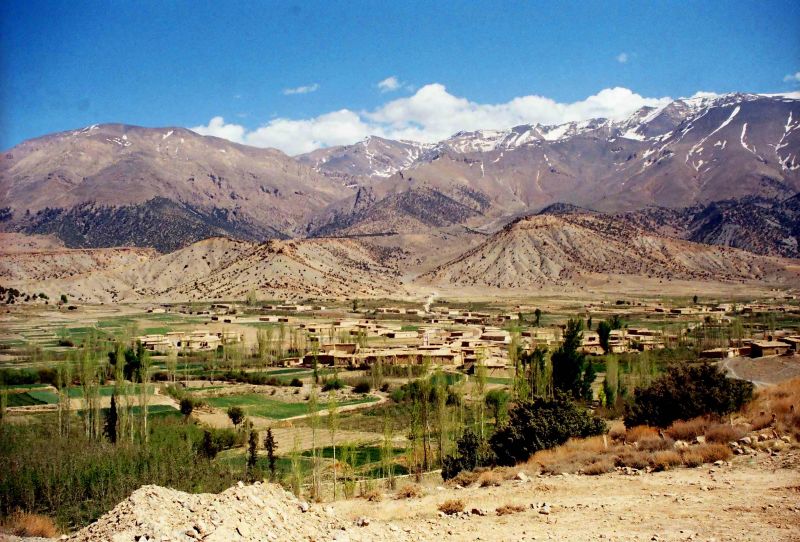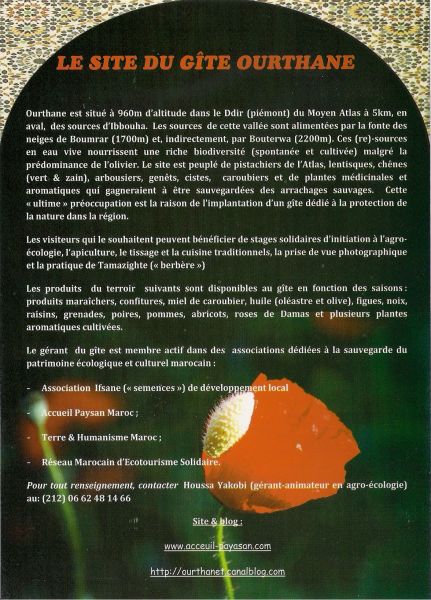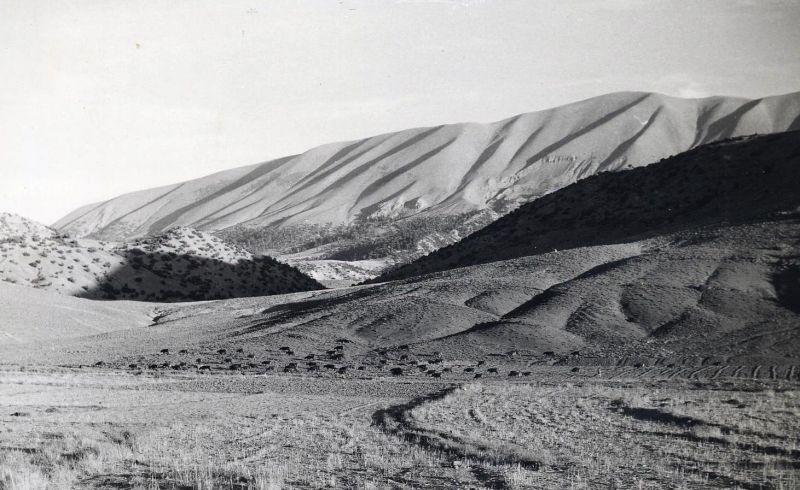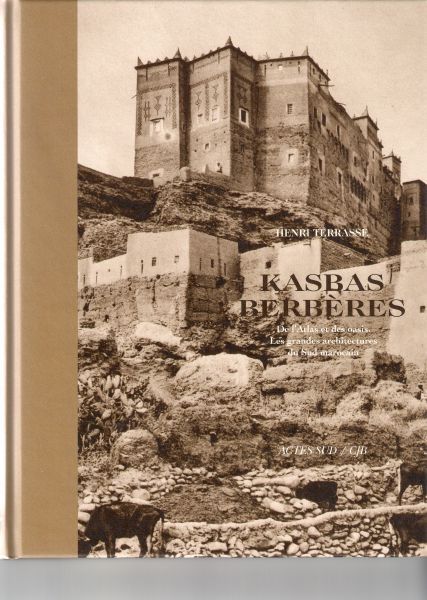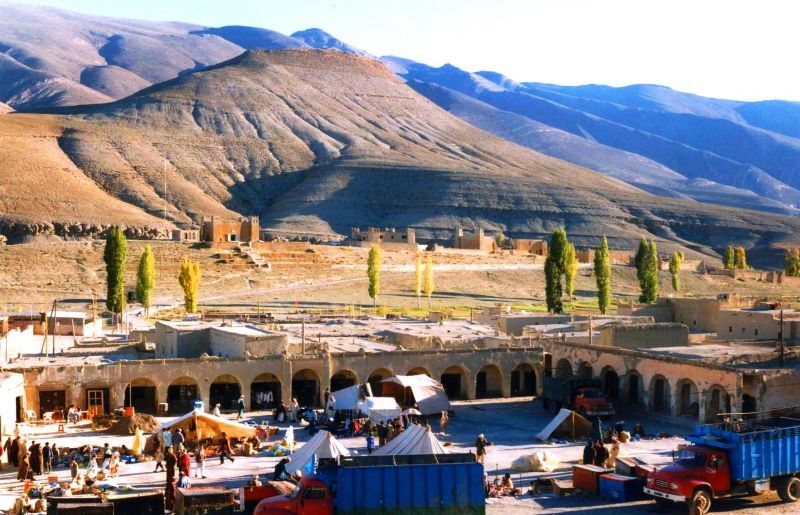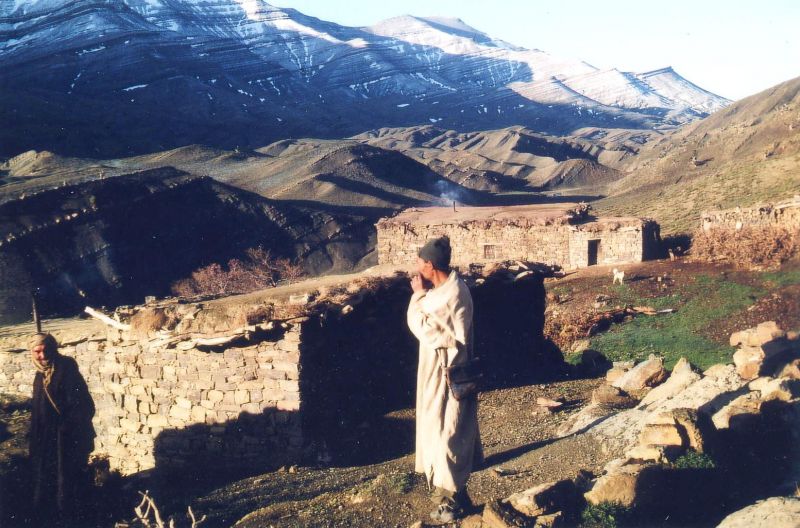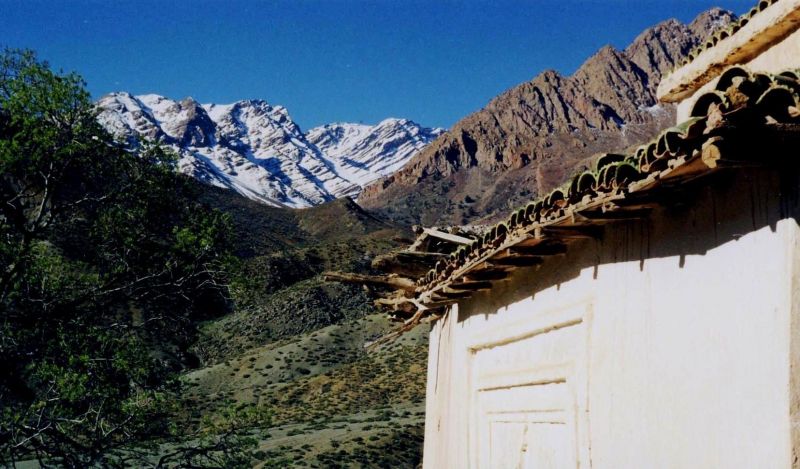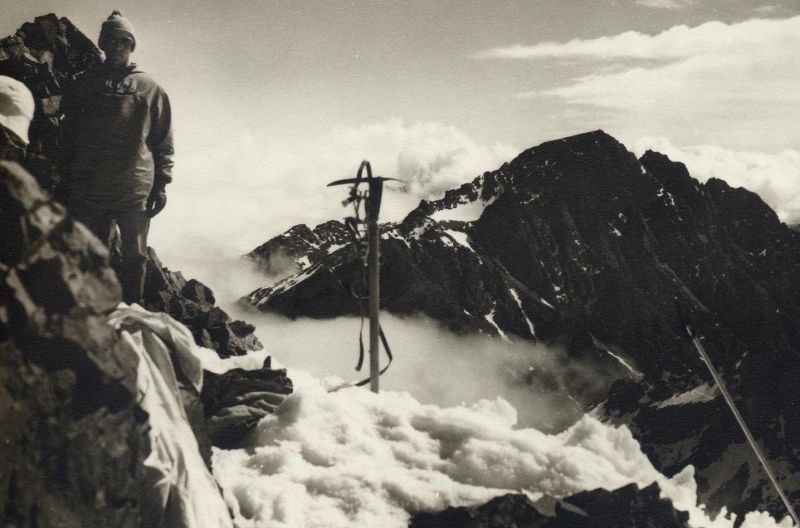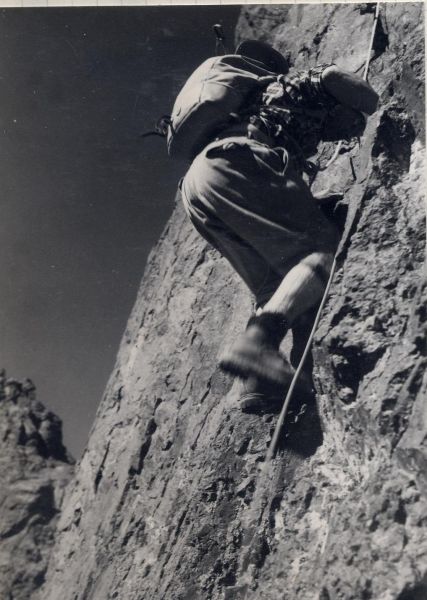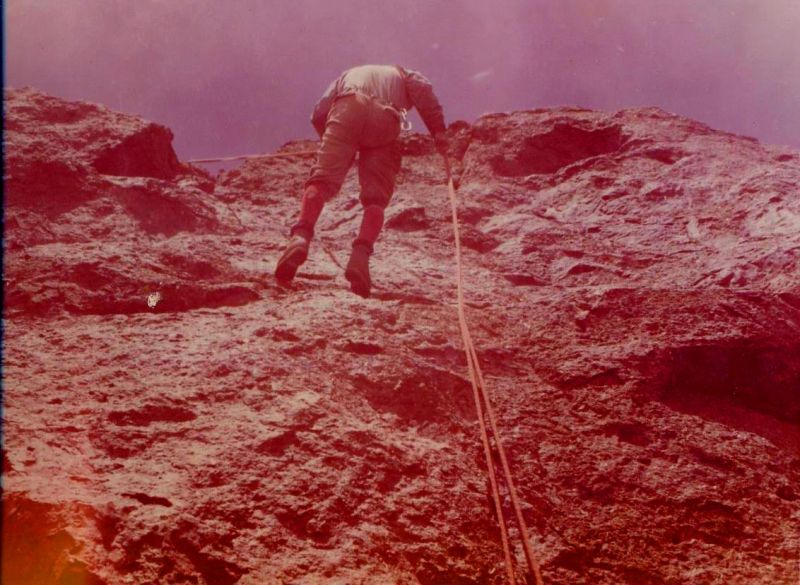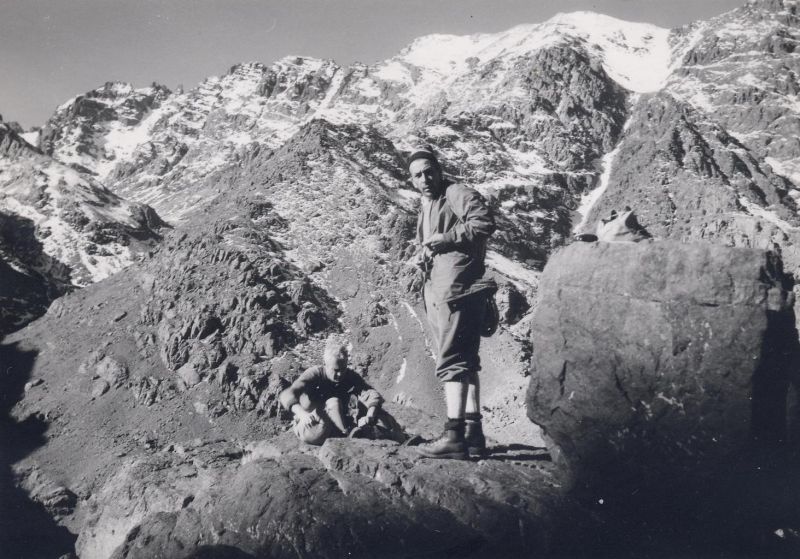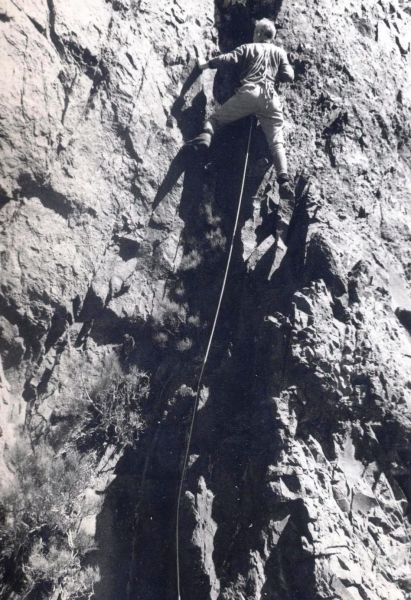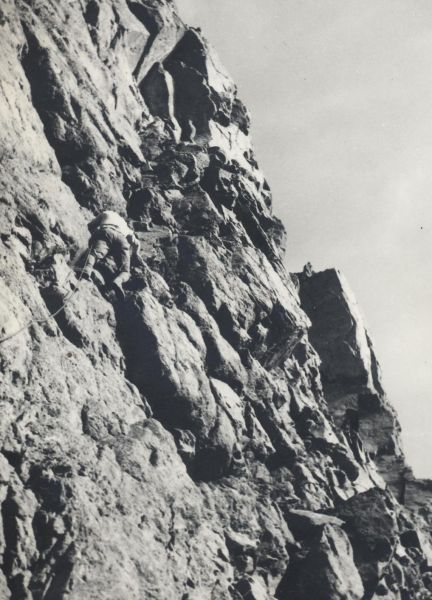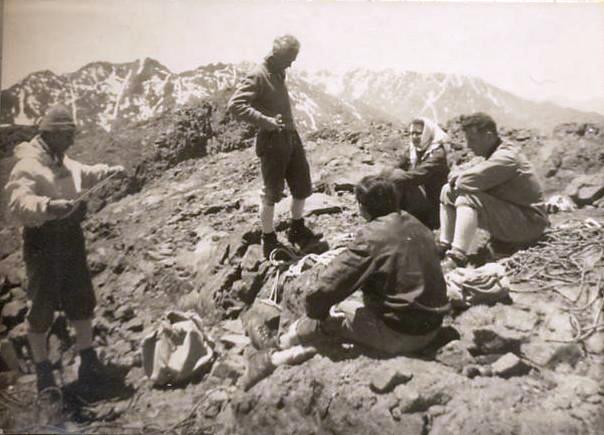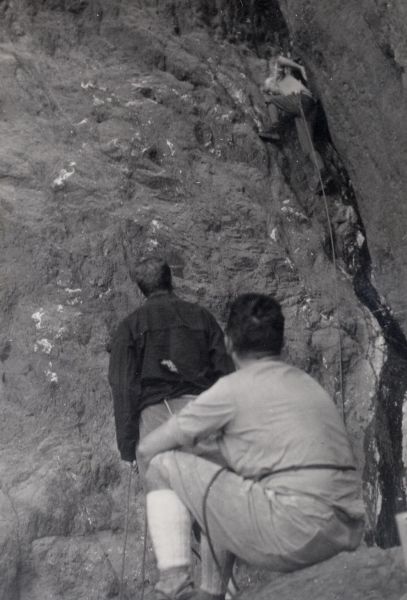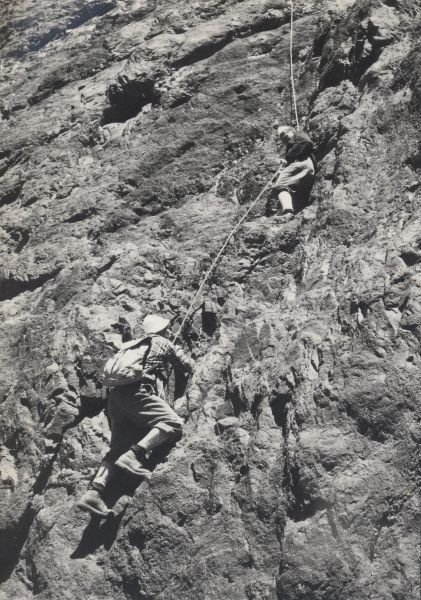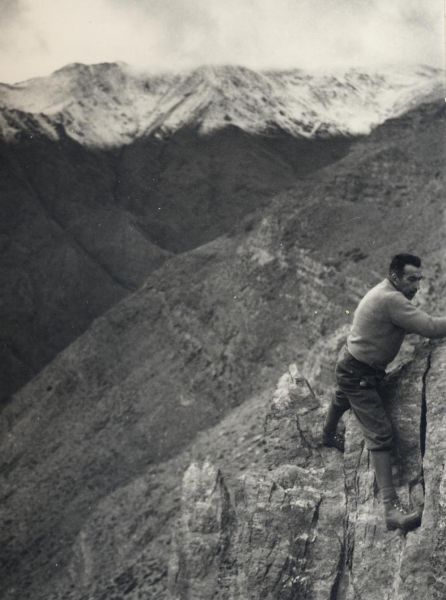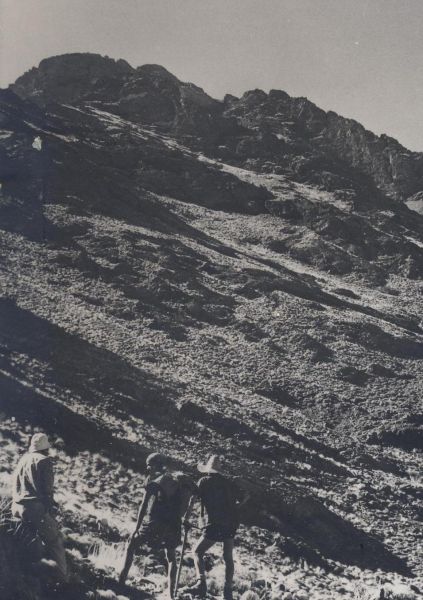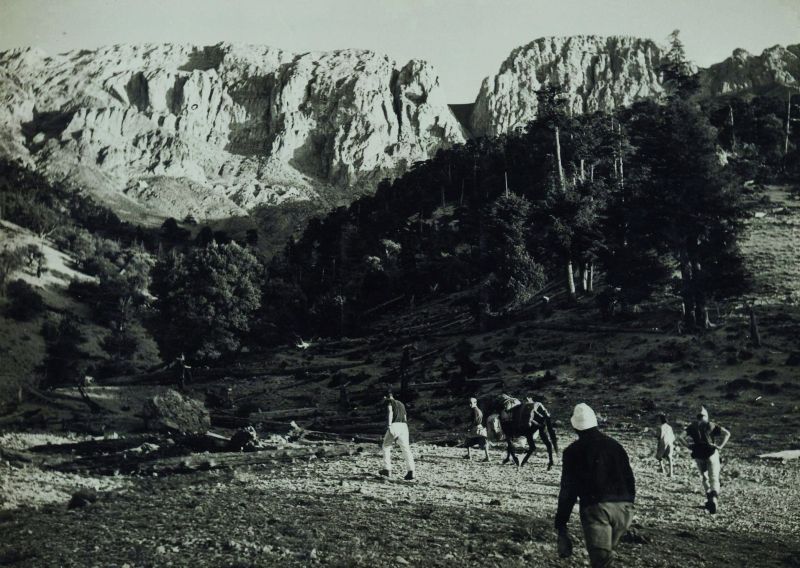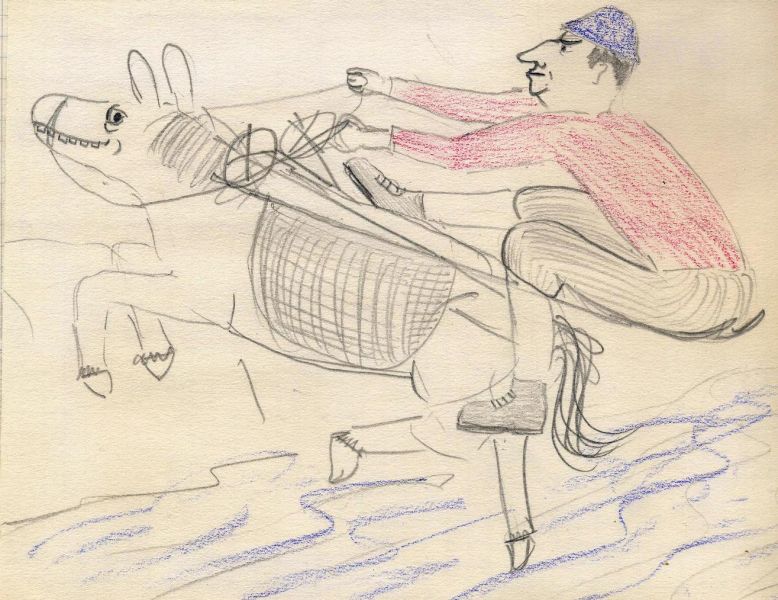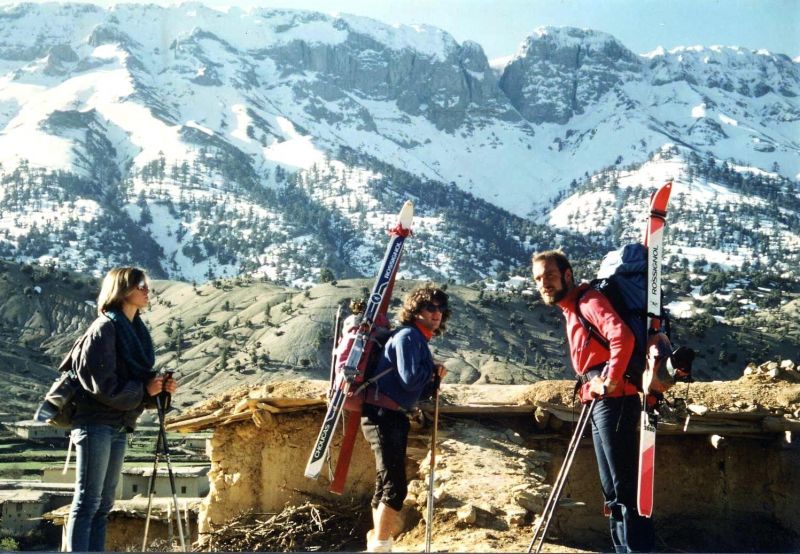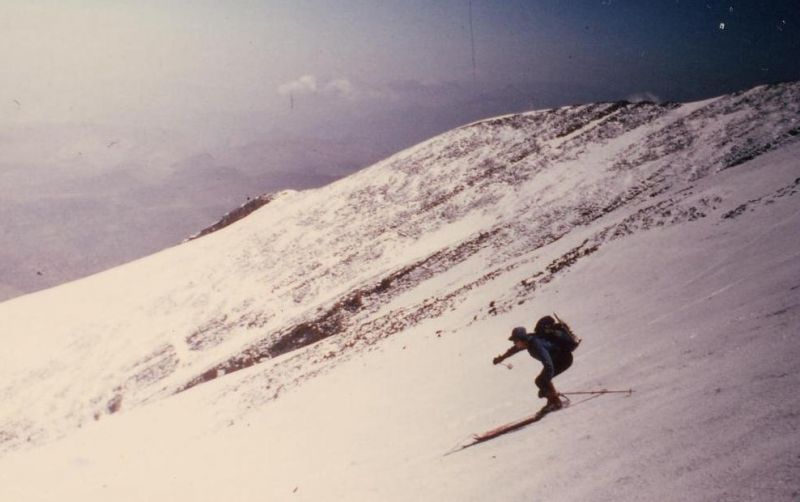Middle Atlas with Yves and Catherine Biville (June 4-9, 2011)
Posté par Michael Peyron le 18 décembre 2011
Talk about short turn-around time! No sooner had we parted company in Marrakesh with Eric and Michel than this writer had to hunker down for a few days to recuperate, what with five grueling GTAM stages behind him and his cardiac rehabilitation plan into its 10th month.
There were indeed further Atlas walks just around the corner. Another team from the French Alps were due in Casablanca on June 2, and a formidable combination at that. No less than Yves Biville, late of the Chasseurs Alpins and an Atlas veteran backpacker in his own right, plus his nimble, easy-striding spouse, Cathou.
A pleasant social occasion linked the Zat-Ourika outing and the forthcoming Middle Atlas stint, when, on the evening of Friday, June 3, we wined and dined both parties (the more so as they were no strangers to each other) at our place in Rabat.
June 4th, 2011 Road to Khenifra
Next morning, in sunny weather, the present writer left for Khenifra with the Bivilles in a Citroen Berlingo van. Just beyond Meknes we had a kebab snack in Boufekrane. Kebab (brochettes in Fr.) snacks in Morocco are no longer what they used to be. Gone the days when one could indulge in memorable brochette stops, sampling tasty skewered meat at unpretentious little bistrots in Settat, Ben Guerir or Khemisset. With the coming of the motor-way and mass motor-travel, swanky eating places have proliferated, announcing a marked decline in quality. Nowadays, it’s usually a case of getting cheerfully ripped off and driving on with a sour taste in one’s mouth!
A long haul followed through the Adarouch pastures and Zaïan azaghar. Some 20 km short of Mrirt a collection of arid, steep-looking hills enabled us to work off our unsatisfactory lunch. For an hour or so we tramped the slopes past herds of sheep and goats beneath greying skies, while thunder growled far to the west.
It was time we were back on the road. The first rain-drops fell as we started off across the plateau S of Mrirt. By the time we were at El Borj it was really coming down in buckets, forcing us off the road for a few minutes till the downpour had spent its strength. Half an hour later, having earlier booked rooms by ‘phone, we were checking in at the “Atlas Zayane Hôtel” in Khenifra.
A strange, rambling building this, it comes within an ace of being a first-class hotel. This writer had never actually stayed there, but the Bivilles, who had been there before, said the place had been improved; largely thanks to a new wing, while the rooms had been re-done in fairly pleasant style. The reasonably welcoming ladies at the reception, however, would do well, when talking to guests, to tear their eyes away from the TV monitors on the wall behind their desk.
Full marks for the finely-appointed restaurant, with an unbeatable view over Khenifra town and cattle egrets winging home from distant, storm-beaten hills, expertly run by a personable young waitress-cum-maître d’. A brief exchange in Tamazight established that she was a tazayyit (woman from Zayan tribe), that our order would be honoured by the chef, and that palatable food would shortly be served. She proved as good as her word and a decent meal soon appeared, washed down with vino.
Two factors precluded early sleep: 1) the night-club which predictably and typically (50% of local hotels’ mark-up is accounted for by late drinking) did its worst, though luckily situated at the other end of the establishment; 2) a crowd of supporters who greeted with cheers each and every move of some foot-ball match in the TV lounge. Meanwhile, it rained most of the night, casting doubts over the morrow’s planned excursion to investigate the hill of El-Gara, some 10 miles E of Khenifra, and a potential Qala’at al-Mahdi site.
June 5th, 2011Visit to El-Gara
We need not have worried. A hearty breakfast soon sent us on our way under a cloudy sky, but at least the rain was holding off. On reaching Pt-1027 on the Agelmam Azigza road we parked the car on the soft shoulder and lost little stamping off down the muddy track. After a couple of hundred yards a huge puddle involved a detour through olive groves to the R. Past the cactus we went and down a tunnel-like path to cross Asif Ayt Nuh, then upwards opposite through dispersed hamlet.
Luckily, we met a friendly Berber woman who, on being asked the way to El- Gara, took the trouble to escort us for ten minutes up the slope, before saying goodbye with a brief: “Keep on uphill left to the col, then turn right and you’ll see El-Gara ahead of you.”
We zigzagged upwards through oak and juniper forest into a gully below Aamira’s cliffs (apparently a nesting-site for Lesser kestrels), over a narrow, rocky col. El-Gara hill now in full view about one km to our right. Reaching it entailed negotiating a squelchy path down to the edge of forest; then across open expanse, skirting wheat-field to lone house with satellite dish and corrugated iron roof. A couple of Berber ladies confirmed we were on course.
Now along a broad tree-lined track with wheat-fields to our right. Here we reached another house and were kept on course by a helpful local housewife who suggested we make a bee line for El-Gara, which entailed a downer and an upper across a grassy-steep-sided valley. There followed a thistly field. By now portions of ancient fortification were poking out of the evergreen oak mantle ahead. We had reached a rival Qala’at al-Mahdi site – rival, that is, to Zawyat Ifrane (visited four times by this writer) near Mrirt, and previously judged to be the genuine article.
For the next hour we examined portions of a medieval wall, in places presenting signs of workmanship remarkable for the period, elsewhere in a sorry state of disrepair, especially where the locals had been helping themselves down the years to building material. It was clear that this fortified ensemble had, at one time, cordoned off the entire hill. The most impressive part was a sort of citadel, requiring some energetic scrambling to reach its top, with an almost vertical drop to Oued Chbouka below and a bird’s eye view of Agelmam Oumlil, the surrounding hills and Adekhsan plain to the W. While defences on the Chbouka side appeared impregnable, it was clear that a determined enemy could launch a decisive assault across wheat-fields on the W flank of the hill; which was probably the angle of attack chosen by the Almohads when they wrested this fortress from the Almoravids.
Or, at least, that is the version preferred by French researcher Arsène Roux, who (like this writer) judges that Zawyat Ifran and the Tisgdelt plateau (some 15 km NE of Mrirt) better fit historical descriptions of the Qala’at al-Mahdi site. According to Roux, El-Gara was merely a large Almoravid fortress built at a slightly later period than the 11th -century Qala’at al-Mahdi. However, Dumas, another Frenchman who visited in 2004 with local man Saïd Jaafar, is convinced that El-Gara is the genuine Qala’at site. Serious archeological investigations on both sites will obviously be required before the enigma can be unravelled.
Leaving El-Gara hill to its choughs, ravens, vipers, sheep and goats we struggled back down through the oak forest, and reversed that morning’s route across wheat-fields, walking at a slightly faster pace in an attempt to beat the rain. Making excellent time we nonetheless lost the race to king-size thunderheads that discharged their contents within 10 minutes of where we’d parked the car. Long enough to get well and truly soaked.
We managed to dry off in the car with the heater on and headed N for Azrou, where we’d booked rooms at the “Hôtel des Cèdres”. We shared the place with a few other tourists, including two middle-aged, visibly naughty-weekending French couples who dropped in for dinner at the downstairs restaurant. Then it was early to bed in centrally-heated rooms.
June 6th, 2011 From Azrou to Oued Zloul
As we left Azrou next morning white clouds were sailing past in a blue sky with the temperature down to 2°C. A first stop at Ougmès revealed an almost empty, castle-like Emirati Euro Camping ground. From the brochures handed out by local staff we gathered the establishment catered mostly for boozing, gut-bashing European senior citizens during the winter months; plenty of parking space for their camping cars, at any rate.
Driving on, we stopped at the “Green Door” in Ifran to purchase a couple of bottles of the local vintage as you never know when the vino can come in handy in this kind of freak spring weather! Sure enough, once we’d admired stilts and great-crested grebes at Dayet Awa, unwelcome clouds and the first rain-drops invited themselves to our picnic lunch near Oued Sebou.
Pushing on we arrived around 2pm at the house of our Berber friend Ayad Kerouach, near Oued Zloul at the foot of the Ahermoumou escarpment. Our initial plan to drive on up to the Taffert Hut went up the creek as Ayad talked us out of approaching Bou Iblan, given the present, unsettled weather and negative reports regarding condition of access road. Oh well, some you win, some you lose. You can’t win them all!
So we decided to ride out the unfavourable weather. In the meantime, to work up an, appetite for dinner, Ayad took us for a walk through the surrounding countryside. He seemed particularly heartened by signs that pressure from man and beast on the local vegetation appeared to have abated somewhat.
June 7th, 2011 Bou Iblan foothills
Next day prospects were distinctly brighter with a cheerful combination of cloud and sunshine evenly distributed across the sky; so after breakfast we boarded the ‘Berlingo’ and made for the hills.
Rather than head off hell-bent for the main Bou Iblan range, Ayad suggested we attempt Ich Ramouz (2.365m), one of its NE outliers, via the Beni Sohan Forestry Hut and Mdawd village.
The subsequent outing developed into a classic, adapting-to-the-weather exercise. At first, all went smoothly. Reaching the Forestry Hut we kitted up and headed through the mixed growth forest towards Mdawd. En route we admired some wild boars frolicking behind a chicken-wire fence – apparently a game reserve of sorts where, for a consideration, wealthy “sportsmen” could come up from Fez and blast the living daylights out of the hapless local swine. Some “sportsmen”…
In fine fettle we strode energetically along the track, reaching a shallow col above Mdawd in less than half an hour. It was now 11:00. The sun was high and bright, everything seemed fine and dandy, while the present writer was apparently making light of the gradient. Beyond some isolated houses and gardens with a profusion of vine, cactus and fig, Ayad led the way up a rough trod over gradually steepening slopes to the left (ENE). Above us loomed Ich Ramouz. At that moment as they made for the heights, a small group of Berber muleteers overtook us, and we exchanged greetings. Ominous clouds were now gathering above. At 11:40 the first squall hit us. Visions of wandering, soaked and spirited, across the Ich Ramouz slopes rapidly convinced us that discretion was the better part of valour. Back down we went while the Berber muleteers disappeared above into the lowering cloud-base.
Rather than lamely descend to Mdawd, Ayad worked his way right till we hit the tree-line – actually a vast pine plantation clothing entire NE slope of Ich Ramouz. The upper portion consisted of Canary Island pine, the remainder of Aleppo pine. This part was fun? Wrapped up to the eyes in foul-weather gear we galloped downhill, twisting and turning through the trees. As a former forester Ayad had completely recovered his woodland feel and expertly guided us from spur to spur, across intervening ravines and forest paths, the ground comfortably carpeted with pine needles. Occasionally, we would stop and gaze back uphill to where the cloud-base had dropped even lower. “Good thing we weren’t caught back up there in those clouds!” Yves shrewdly observed.
Half an hour later, to conclude our “raiders of the pine forest” stunt, we emerged from a final stand of Canary Island pine onto wheat fields which we skirted till the dirt road (tufna < Fr. ‘tout venant’) was reached. The Forestry Hut was just beyond. Bunching together under a large pine tree to escape on-going drizzle we settled down to a well-earned picnic.
The meal over we pushed on along the tufna track to Beni Zehna, but rain and mist remained unrelenting. There was nothing for it but return tamely to Ayad’s house in the Zloul for more of his lavish hospitality, dry out by the fire-place and read a book till dinner.
June 8th, 2011 Tizi n-Tigoulmamin
Next day finally dawned fine. But after breakfast our, paths diverged: Ayad had to go down to Fez on business; we had been planning to make for Skoura n-Ayt Seghrouchen to check out a new lodge we’d heard about. On Ayad’s instructions we followed the narrow, winding Zloul road towards El Aderej, turned off right after a few miles and headed towards Oued Mddez. All plain sailing until the road became a track and we found, ourselves bumping down towards the river. After crossing the Mddez there was more dirt track before we found the tarmac of the Tazouta-Skoura road. Apparently all the fuss was connected with a dam-building project. Saw congregation of about 60 Black kites and Rough-legged buzzards along this stretch of road, seemingly attracted by some nearby carcasses.
Ahead of us, bathed in bright sunshine, rose the gaunt backbone of Jbel Tichchoukt as we sped along the road with hardly enough space to pass on-coming vehicles, of which there were mercifully few. We then drove through what has to be one of the densest concentrations of olive-groves in Morocco, till suddenly around noon, we were at the entrance to Skoura. Aiming to park somewhere near the Tadout plateau that overlooks Skoura, we turned sharp left up the slope, following the tarmac past the main square with its taxi rank. Then uphill again, noting for further reference a very steep track and signpost indicating “Gîte Skoura”, until a couple of km beyond Skoura we reached a turning in the road with plenty of parking space on the right, near entrance to track leading to Tadout Forestry Hut.
After a brief picnic we kitted up and looking beyond thinly wooded slopes to Tichchoukt main ridge, noticed a likely-looking notch standing out proudly against the azure sky, at the point where it declined to the E, actually Tizi n-Tigoulmamin. This, we decided, would be our afternoon objective.
After an initially uninspiring boxwood gully, open fields lying fallow and an occasional sheep or two in the distance, we zigzagged up gentle slopes sparsely strewn with evergreen oak. Plenty of grass about, though, actually increasing as we gained altitude. Above the tree-line, the slope evened off, ushering us onto a spacious grassy bowl with several herds of sheep and goats grazing in the vicinity.
Tizi n-Tigoulmamin derives its name from the tarns that adorn it – one of them still filled with water on this occasion, and a sign that it had been a rainy spring. After saluting some friendly young shepherds and their surprisingly mild-mannered dogs, we crossed the pasture and followed an obvious trod trending right at the S end of the pass. Half way up the slope we crossed some rocks and emerged onto the ridge proper. We’d been walking a couple of hours or so – quite enough for that day. Before returning we admired the stupendous view, this being the first truly fine day in a week! Tichchoukt continued SW and up into the blue; we could see to the N the arid Mddez plain; due E to cloud-veiled Bou Iblan and S to El Mers, towards which snaked the ribbon of road we’d followed on foot back in 1984, when it was still a track. The times they are indeed a-changin’!
We retraced our steps uneventfully across the pass, past a few scrawny trees and eventually to the car left unattended by the roadside. Nobody had touched it. Now to see what this new Skoura lodge was like. Off we went down towards the village. In no time we were confronted with the aforementioned signpost and an uncompromisingly steep, stony track. Launching our plucky little ‘Berlingo’ uphill we climbed with some trepidation for about half a mile until we were just below the edge of a cliff, down which spattered a sizeable waterfall.
We now discovered a small, red-brown, Kasbah-like building – recognizable as the gîte from photos seen on the Internet. Despite the unprepossessing track we had made it to home base with no apparent damage to our vehicle. Parking space, however, is at a premium, not that this gîte could handle more than three car-loads of guests at any one time! As it was about 5pm we decided to unload our things, looking forward to an early dinner and quickly to bed.
June 8th, 2011 (evening), Skoura gîte
Wrong address for that kind of expectation, I’m afraid; the situation took time, a lot of time to unwind. In fact, the whole operation was handled in a delightfully casual, informal manner, so much so, that we felt we were dealing with out-and-out amateurs who’d suddenly decided to go in for inn-keeping.
We had booked by ‘phone, someone whom we’ll call Mostafa handling our call. Naturally expecting to meet the aforesaid Mostafa we climbed up to the lodge, only to find it empty. After a few minutes a middle-aged Berber woman, Rkia by name, appeared and informed us that Lhoussein would soon arrive. That worthy put in an appearance another five minutes later and friendly conversation in Tamazight ensued. Yes, of course, we could settle in; and early dinner, no meat, just vegetables or eggs? Why, of course, no problem, ur illi ca n muckil! A youth now appeared and he introduced him us to as: han u-tada nu, “this is my milk-brother”; all nice, informal and friendly.
From the terrace of the lodge, dodging occasional spray from the waterfall, we gazed uphill at steep slopes, terraced fields, hill villages and the Tichchoukt main ridge. Lhoussein waxed eloquent: “You’re only spending one night? What a pity! Come back next year and we’ll visit these hills together!” Shortly afterwards he disappeared, promising that we’d have dinner well before 8 pm – and we never saw him again – not that we ever got round to seeing the elusive Mostafa, either!
Lhoussein had gone and left u-tada holding the baby. So we relaxed on the plush cushions and carpets of the main guest-chamber. Well, after dark, around 8 pm, we strolled upstairs to the kitchen and discovered that a quite unexpected cooking staff – u-tada, his hijab-wearing fiancée and a handsome, swarthy middle-aged lady – were preparing a totally different dinner from what we had ordered.
Well, to cut a long story short, we eventually dined quite nicely around 9:30 pm and then repaired to bed. The bed-room, compared with the amateurish fumbling of the staff, was all that tired back-packers could have hoped for. Curtained windows, wall-to-wall carpets, comfy little rug-covered beds – a real gem! A lot of thought had obviously gone into designing this lodge, as we noticed when visiting the bath-room. Flushing toilets, efficiently-working taps and wash-basins, purpose-built showers with ablution stools, the sanitary arrangements couldn’t be faulted. In fact, we sensed that the whole operation must be master-minded by some big-city Moroccans with a bent for the wilds and who visited occasionally with their friends and/or families. It was just a pity the local staff were so dilatory in their approach to inn-keeping.
June 9th 2011 Return to Rabat
After an excellent night’s sleep u-tada served us a perfectly adequate breakfast, we paid the bill (about DH 300,- per head), loaded up the car and left by mid-morning. A picnic lunch in the Ifran cedar forest was our last taste of the middle Atlas before we settled down to the long, hot drive back down to Rabat, which we reached around 5 pm.
Publié dans General, Tourisme de montagne Atlas marocain | Pas de Commentaire »



